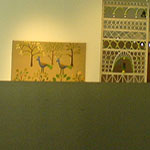Euroacademia Conferences
 Europe Inside-Out: Europe and Europeanness Exposed to Plural Observers (9th Edition) April 24 - 25, 2020
Europe Inside-Out: Europe and Europeanness Exposed to Plural Observers (9th Edition) April 24 - 25, 2020 Identities and Identifications: Politicized Uses of Collective Identities (9th Edition) June 12 - 13, 2020
Identities and Identifications: Politicized Uses of Collective Identities (9th Edition) June 12 - 13, 2020 8th Forum of Critical Studies: Asking Big Questions Again January 24 - 25, 2020
8th Forum of Critical Studies: Asking Big Questions Again January 24 - 25, 2020 Re-Inventing Eastern Europe (7th Edition) December 13 - 14, 2019
Re-Inventing Eastern Europe (7th Edition) December 13 - 14, 2019 The European Union and the Politicization of Europe (8th Edition) October 25 - 26, 2019
The European Union and the Politicization of Europe (8th Edition) October 25 - 26, 2019 Identities and Identifications: Politicized Uses of Collective Identities (8th Edition) June 28 - 29, 2019
Identities and Identifications: Politicized Uses of Collective Identities (8th Edition) June 28 - 29, 2019 The European Union and the Politicization of Europe (7th Edition) January 25 - 26, 2019
The European Union and the Politicization of Europe (7th Edition) January 25 - 26, 2019 7th Forum of Critical Studies: Asking Big Questions Again November 23 - 24, 2018
7th Forum of Critical Studies: Asking Big Questions Again November 23 - 24, 2018 Europe Inside-Out: Europe and Europeanness Exposed to Plural Observers (8th Edition) September 28 - 30, 2018
Europe Inside-Out: Europe and Europeanness Exposed to Plural Observers (8th Edition) September 28 - 30, 2018 Identities and Identifications: Politicized Uses of Collective Identities (7th Edition) June 14 - 15, 2018
Identities and Identifications: Politicized Uses of Collective Identities (7th Edition) June 14 - 15, 2018
Sculpting a National Identity Abroad: Constantin Meunier (1831-1905) in Paris
-
-

-
Presentation speakers
- Jana Wijnsouw, Ghent University, Belgium
Abstract:
Nineteenth-century Belgian and French sculpture were subject to similar, often entwined developments. The presence of French sculptors, such as Auguste Rodin or Albert-Ernest Carrier-Belleuse in Belgium coincided with attempts to develop Belgium’s own ‘national’ sculpture school. While almost all major French sculptors exhibited at the Belgian salons, every Belgian sculptor aspiring fame, studied and exhibited in Paris. In 1878, a review by sculptor Henri Chapu about the Fine Arts department at the Universal Exhibition in Paris confirmed, ‘Avec les sculpteurs belges, nous ne sortons pas de la France. Beaucoup se sont formés à Paris et leur style n’est pas sensiblement distinct de celui de notre école’. Notwithstanding, art critics and artists at the same time often stressed artists’ origins and ‘national identity’, ascribing and comparing specific national characteristics to their artworks and constructing an artificial hierarchy of ‘national schools’. This paper elucidates on the case of the Belgian sculptor Constantin Meunier and his success in France, and demonstrates the role and importance of art critical magazines in the reporting and moulding of an artist’s national and international identity. Special attention is paid to nationality as a means of classification, and the nationality of style. Finally, the simultaneous dialogue between artists and art critics of different nations are examined, as well as the assimilation of Meunier as a national icon during the nineteenth-century and present canon.
-
Related Presentations

The City: Labyrinth & Library: The Agonism of the Public-Space
- Leander Gussmann

















